Tools Required
J 8087 Cylinder Bore Gage
Important: Measurements of all components should be taken with the components at
normal room temperature.
For proper piston fit, the engine block cylinder bores should not have
excessive wear or taper.
A used piston and pin set may be reinstalled if, after cleaning and
inspection, they are within specifications.
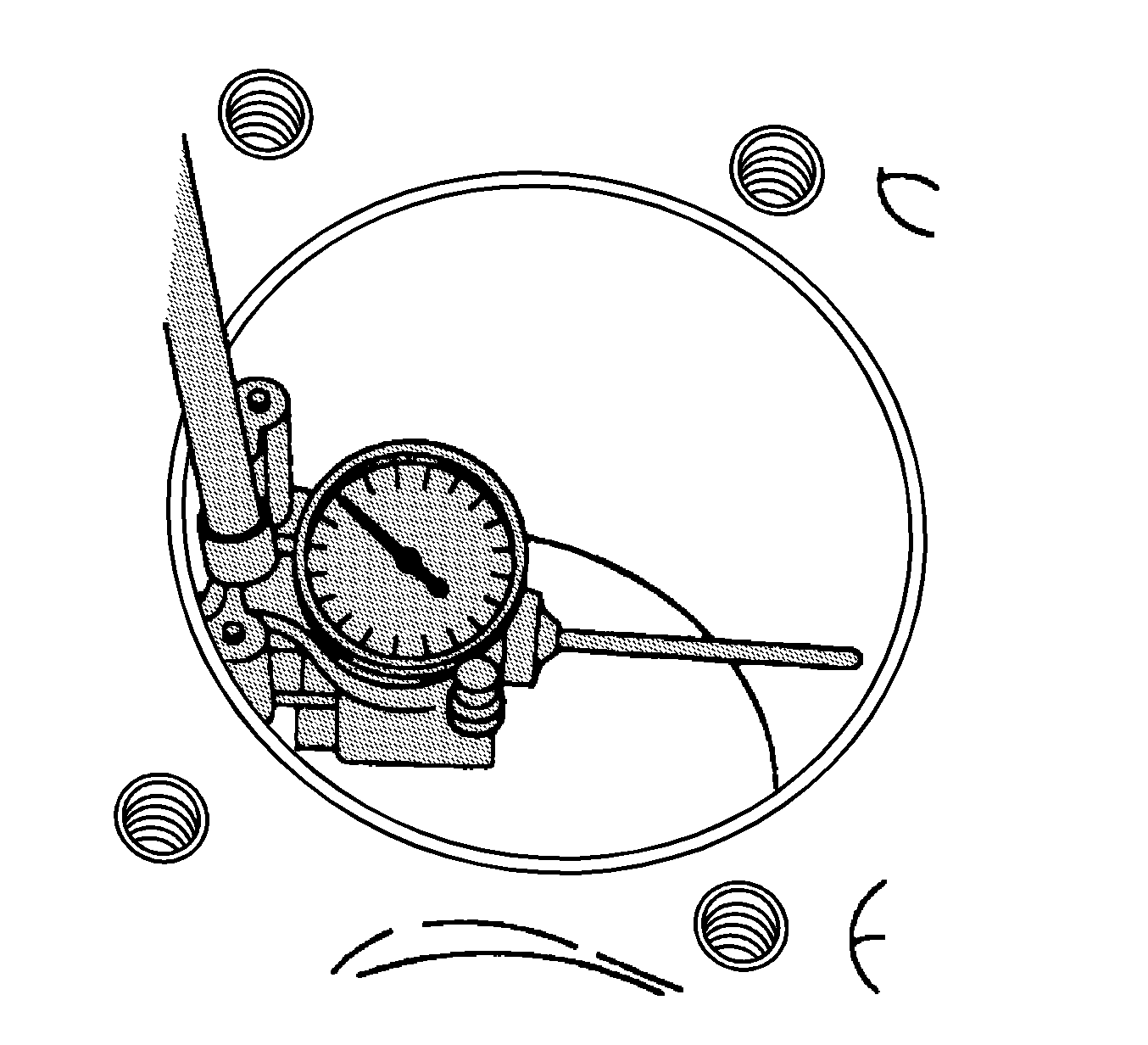
- Inspect the engine block cylinder bore
using the J 8087
.
- Inspect the piston and pin. Refer to
Piston, Connecting Rod, and Bearing Cleaning and Inspection
.
- Use the J 8087
and measure
the cylinder bore diameter. Measure at a point 64 mm (2.5 in)
from the top of the cylinder bore.
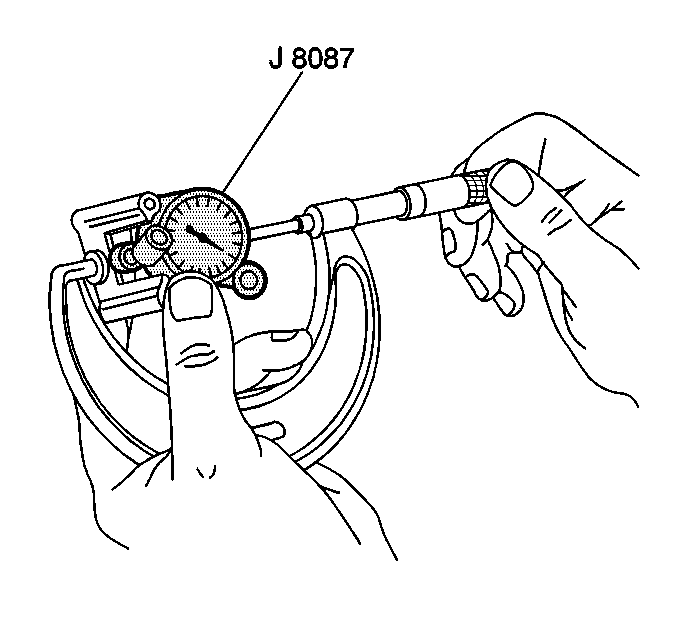
- Measure the J 8087
with a micrometer and record the reading.
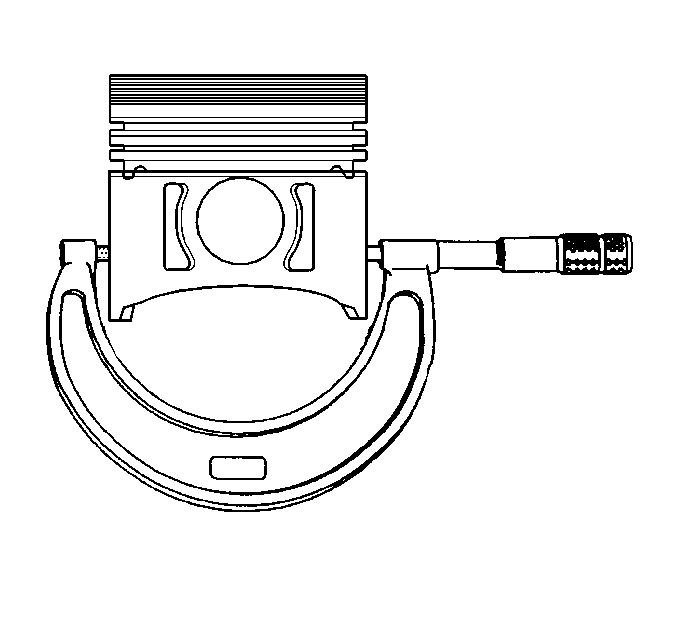
- With a micrometer or caliper at a right
angle to the piston, measure the piston 11 mm (0.433 in) from
the bottom of the skirt.
- Subtract the piston diameter from the cylinder bore diameter in
order to determine piston-to-bore clearance. Refer to
Engine Mechanical Specifications
.
- If the proper clearance cannot be obtained, select another piston
and measure the clearances.
- When the piston-to-cylinder bore clearance is within specifications,
permanently mark the top of the piston for installation into the proper cylinder.
Connecting Rod Cleaning Procedure
- Clean the connecting rods in solvent.
Caution: Refer to Safety Glasses Caution in the Preface section.
- Dry the connecting rods with compressed air.
Connecting Rod Inspection Procedure
| • | Inspect the connecting rods for the following: |
| - | Signs of being twisted, bent, nicked, or cracked |
| - | Scratches or abrasion on the rod bearing seating surface |
| • | If the connecting rod bores contain minor scratches or abrasions,
clean the bores in a circular direction with a light emery paper. DO NOT scrape
the rod or rod cap. |
Connecting Rod Measurement Procedure
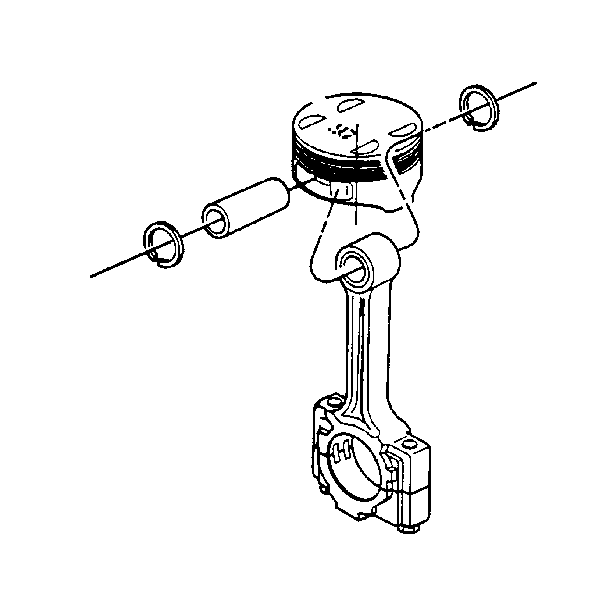
- Measure the piston pin to connecting rod
bore using the following procedure:
| 1.1. | Using an outside micrometer, take two measurements of the piston
pin in the area of the connecting rod contact. |
| 1.2. | Using an inside micrometer, measure the connecting rod piston
pin bore. |
| 1.3. | Subtract the piston pin diameter from the piston pin bore. |
| 1.4. | The clearance should not exceed 0.016 mm (0.0006 in). |
- If the clearance is excessive, replace the piston pin.
Piston Cleaning Procedure
| • | Clean the piston skirts and the pins with a cleaning solvent.
DO NOT wire brush any part of the piston. |
| • | Clean the piston ring grooves with a groove cleaner. Make sure
the oil ring holes and slots are clean. |
Piston Inspection Procedure
| • |
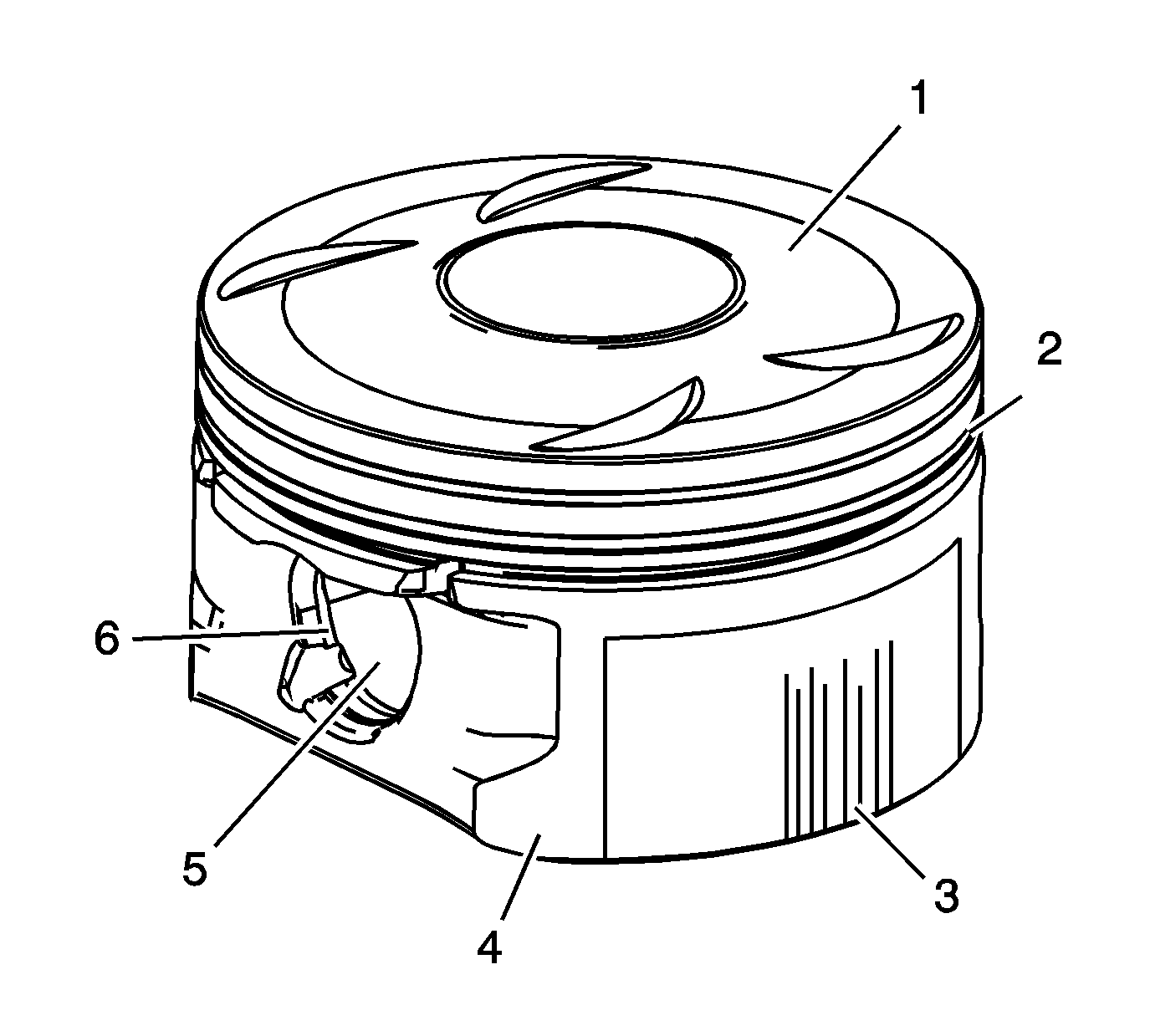
Inspect the pistons for the following
conditions: |
| - | Cracked ring lands, skirts, or pin bosses |
| - | Ring grooves for nicks, burrs that may cause binding |
| - | Warped or worn ring lands |
| - | Piston pin retainer grooves for burrs |
| - | Scuffed or damaged skirt coating |
| - | Eroded areas at the top of the piston |
| - | Worn piston pin bores or worn piston pins |
| • | Replace pistons that show any signs or damage or excessive wear. |
Piston Diameter Measurement Procedure
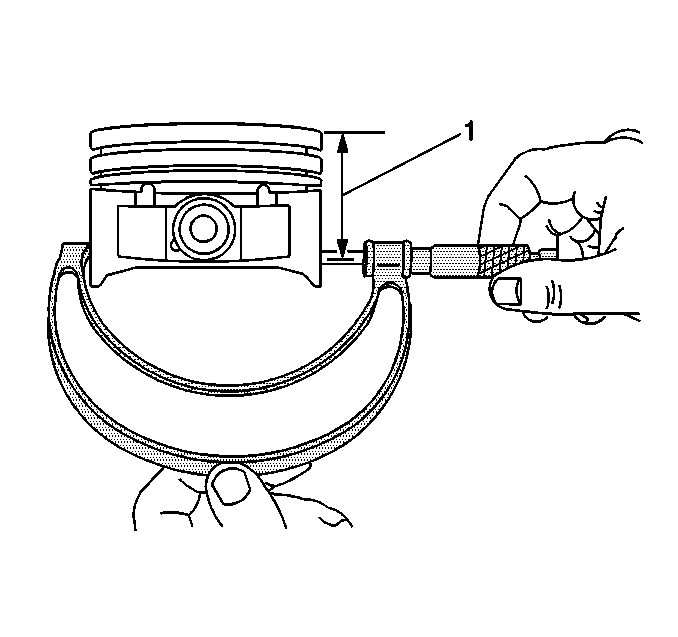
- Using an outside micrometer, measure the
width of the piston 46 mm (1.811 in) below the crown, top, of
the piston at the thrust surface which is perpendicular to the centerline
of the piston pin (1).
- Compare the measurement to the diameter listed in the engine mechanical
specifications.
- You must replace the piston if any of its dimensions are out of
specification. There are no oversized pistons available.
Piston Pin Bore Measurement Procedure

- Piston pin bores and pins must be free
of varnish or scuffing.
- Use an outside micrometer to measure the piston pin in the piston
contact areas.
- Using an inside micrometer, measure the piston pin bore.
- Subtract the measurement of the piston pin bore from the piston
pin.
- Compare the result with the engine mechanical specifications.
- If the clearance is excessive, determine which piece is out of
specification and replace as necessary.
Piston Ring End Gap Measurement Procedure
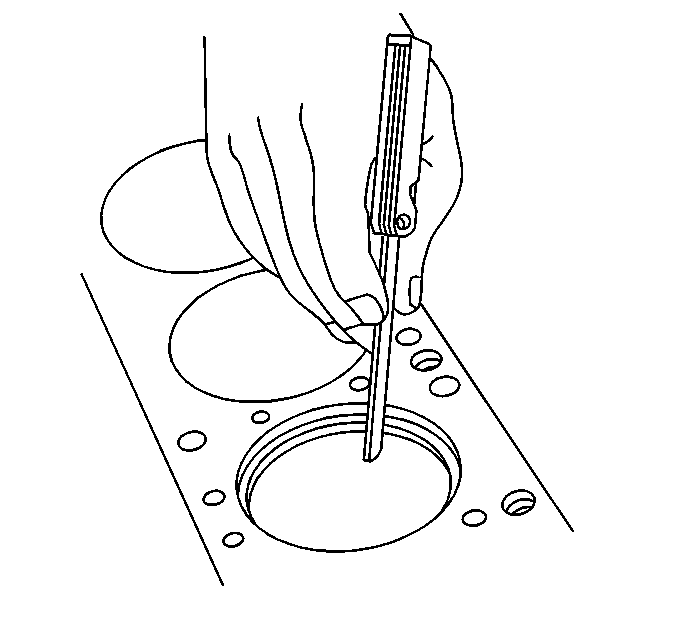
- Place the piston ring in the area of the
bore where the piston ring will travel, approximately 25 mm (1 in)
down from the deck surface. Be sure the ring is square with the cylinder bore
by positioning the ring with the piston head.
- Measure the end gap of the piston ring with feeler gages. Compare
the measurements with those provided in the engine mechanical specifications.
- If the clearance exceeds the provided specifications, the piston
rings must be replaced.
- Repeat this procedure for all the piston rings.
Piston Ring Side Clearance Measurement Procedure
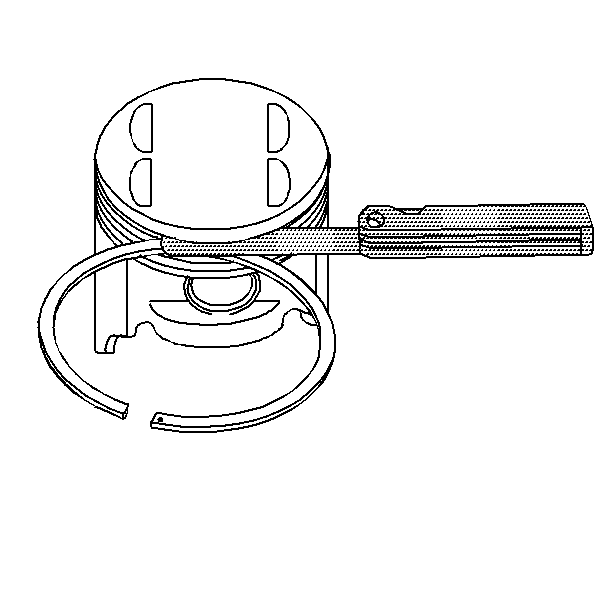
- Roll the piston ring entirely around the
piston ring groove. If any binding is caused by the ring groove, dress the
groove with a fine file. If any binding is caused by a distorted piston ring,
replace the ring.
- With the piston ring on the piston, use feeler gages to check
side clearance at multiple locations.
- Compare your measurements with those found in the engine mechanical
specifications.
- If the clearance is greater than specifications, replace the piston
rings.
- If new piston rings do not bring the clearance within specification,
the piston must be replaced.
- When replacing the piston rings, only install re-ring sets that
have a 1.2 mm (0.047 in) thick nitrided steel upper compression
ring and multi-piece oil rings. The top compression ring may be installed
with either side up. There is a locating dimple on the 2nd compression ring
near the end for identification of the top side. Install the 2nd compression
ring with the dimple facing up.









